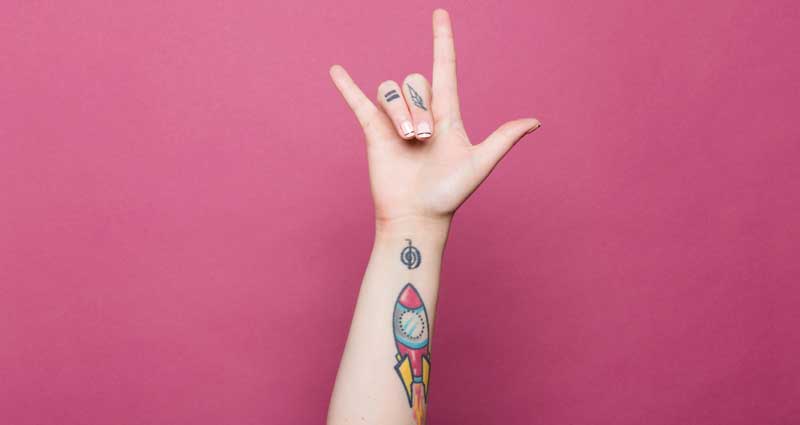 Everything To Know About Tattoo Ink
Everything To Know About Tattoo Ink
When deciding to get a tattoo, most people take their time to scout out an artist they like and find a place that is clean and reputable. But how often do people question the ink used in their tattoos? Did you know that tattoo ink is mostly unregulated? This doesn’t mean that all tattoos are unsafe or dangerous, but it’s worth exploring the topic.
Our goal with this post is to give our readers more insight into tattoo ink. This understanding will be important for those looking to get tatted as well as anyone interested in removing tattoos. Why does this matter for laser tattoo removal? The chemical makeup of your unique tattoo can affect how the removal process goes.
What You Should Know About Tattoo Ink
What is ink? We can’t really answer this. As manufacturers of inks and pigments used for tattoos regard their recipes as proprietary, they are legally allowed to keep the ingredients hidden from public knowledge. While the lack of regulation may seem worrisome, it doesn’t mean the FDA isn’t keeping an eye on things (more on this in a second).
Tattoo ink is made up of pigments and a carrier–the pigments are color additives, which are subject to premarket approval by the FDA. The FDA has recalled contaminated inks in the past, and many won’t hit the market if they’re deemed to contain unsafe ingredients.
Understanding Tattoo Ink
By now you understand that pigments + carrier = tattoo ink, but what’s a carrier? This is a substance or mixture used for a few different reasons, including:
- Ensure the pigment is evenly distributed
- Prevent clumping of the pigment
- Aid in application to the skin
- Inhibit the growth of pathogens
These substances can be made from various ingredients, but some of the most common and safest are witch hazel, purified water, glycerine, and ethanol.
Ingredients vary with every tattoo, and this uncertainty is one factor that our Certified Laser Specialists must consider when removing tattoos. Every tattoo is different and requires a unique approach. Fortunately for you our team of experts has decades of experience!
Complications to Consider
While not entirely typical, there is cause for concern that unsafe tattoo ink may cause infection or even allergic reaction.
Tattoo ink can be contaminated by bacteria or mold, which is why you must consult with a tattoo artist that you trust and believe practices safe tattoo procedure. You should also be aware that allergic reactions are possible.
The easiest way to tell the difference between an allergic reaction and infection is to determine where the symptoms occur.
Allergic reactions will show signs of irritation on the skin around the offending pigment for a few days or even weeks. On the other hand, an infection will show signs of irritation across the tattoo and beyond, usually coupled with other symptoms like a fever or chills.
If you experience any type of reaction you should first contact your healthcare provider and then the tattoo artist.
Ask your tattoo artist to provide information about the ink used (brand, color, and any lot or batch number of the ink or diluent).
This information may help determine the root of the problem and how to tend to it as well as allow the artist to discontinue using the ink on other clients.
How You Can Protect Yourself
In the past, tattoo inks were made of charcoal, ash, and other materials found in nature.
In the last few decades, more complex recipes have become popular, but not necessarily safer.
Some tattoo inks contain heavy metals like copper, zinc, aluminum, cobalt, mercury, and more.
Your best bet for getting a safe tattoo is to find a professional tattoo artist that mixes their own ink from dry pigments. In this case, you’re more likely to know the composition of the inks that will be used for your tattoos, which will be instrumental in avoiding infection or allergic reaction.
How Tattoo Ink Affects Laser Tattoo Removal
Like we mentioned at the beginning of this article, the chemical makeup of your ink can alter how the laser reacts. For example, some artists combine many different colors to get black, and once we begin the removal process, the other colors will start to show. This will require a new approach entirely.
Another example of complications comes from clients with red ink tattoos because many times, red ink contains mercury which may not react well to laser exposure.
At MEDermis Laser Clinic, tattoo removal is achieved by pulsing a laser over your tattoo, which allows us to direct light energy toward the ink. The tattoo’s ink particles absorb the energy and then break down, if the ink doesn’t absorb the laser’s light, then an incorrect wavelength is being used. Wondering why wavelength matters? It can affect the likelihood of your tattoo removal being successful.
Since being founded in 2006, MEDermis has committed to using the absolute best in tattoo removal technology. At the moment, the best is the Spectra laser system by Lutronic. The Spectra has four different wavelengths, which gives our Certified Laser Specialists more control over the intensity level of the beam and the ability to target specific areas. This versatility minimizes the risk of thermal damage to the skin while effectively removing even the most stubborn tattoo inks. Want proof? Take a look through our before and after gallery to see some of our work.
We’re Here to Help!
When in doubt, get in touch with the MEDermis team! During your FREE consultation, our Certified Laser Specialists can explain more about our laser technology and the appropriate treatment plan for your tattoo.
Get in touch with us today! You can sign up now by filling out our online contact form, calling our Austin clinic at 512-637-5277 or the San Antonio clinic at 210-402-4030, or shoot us a quick message to info@medermislaserclinic.com and let us know which location works for you.
